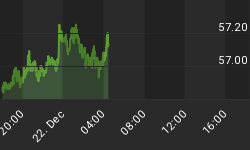As the price of gold continues to rise without regard to the daily fulgurations in the dollar's exchange rate verses other fiat currencies, many on Wall Street have label this new trading dynamic as yet another "conundrum." Rapidly becoming the most over-used word on Wall Street, "conundrum" denotes a situation where markets act differently from what conventional "wisdom" dictates. Rather than questioning the legitimacy behind their assumptions, strategists simply label such outcomes as "conundrums."
However, far from being a conundrum, gold's long overdue decoupling from the U.S, dollar not only makes perfect sense, but was easily predictable. In fact, in my commentary of June 6 th 2004 entitled "Gold and Oil Could Spark Surprise ECB Rate Hike" and in the follow up commentary of June 17 th entitled "Gold's Trifecta Reveals Dollar's Diminished Status", I not only explained why the dollar/gold relationship was about to change, but predicted gold's recent surge before it began.
The fact is that for a while it was only the dollar that was losing value. However, as other central banks inflated to mitigate the dollar's decline, the world's savers began to take notice, and reacted by fleeing all fiat currencies in favor of gold. The old saying that "paper currencies do not float, but merely sink at different rates" is becoming increasingly evident with each up-tick in the price of gold.
The reality though is that it is not gold which is gaining value, but currencies that are losing it. This loss of purchasing power is increasingly evidenced by rising nominal prices of both assets and real goods. Do not be fooled by the pretense of higher nominal asset prices that merely reflect depreciating paper currencies. Even though stock prices may appear to be rising, they continue losing value relative to gold.
Gold's recent strength continues to attract the attention of investment professionals. Though some of gold's new found fair weather friends may appear to be bullish, they continue hedging their long-term forecasts by urging caution, simultaneously suggesting a major top could be forming, and advising investors to buy on pull backs. While such noncommittal "advice" conveniently allows advisors to have it both ways, it is worthless to investors, many of whom may have missed the last 150 dollars of upside waiting to buy on the illusive pull back.
The contrarian in me is a bit concerned by gold's new found popularity among those who only recently regarded the yellow metal as a "barbaric relic". However, I take solace in the fact that few understand the true reasons behind the rally or the extent to which prices are likely to rise. In the end, even most gold bulls will likely be proven wrong as they will not have been bullish enough.
Do not wait for pull backs that may never come. Buy gold at current prices and do not look back. I still believe the best way for average investors to participate is thought the Perth Mint in Australia. For more information on their unique, safe, private, low-cost program visit www.goldyoucanfold.com.
In addition, as the dollar's value is likely to sink far faster than those of other fiat currencies, investors can learn strategies to protect wealth and preserve purchasing power by downloading my free research report on the coming collapse of the U.S. dollar at www.researchreportone.com and subscribing to my free, on-line investment newsletter at http://www.europac.net/newsletter/newsletter.asp.















